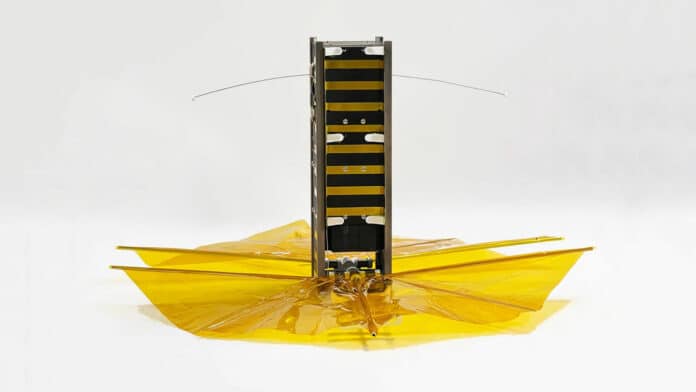Common sense suggests that space missions can only happen with multimillion-dollar budgets and materials built to withstand the unforgiving conditions beyond Earth’s atmosphere.
According to NASA, more than 27,000 pieces of space junk are currently orbiting high above humans’ heads. It also includes defunct satellites that remain in orbit, sometimes decades after their mission is complete. That’s a problem, given that most satellites remain in orbit for an average of 25 years or more.
A team of engineering students from Brown University has designed and built a small cube satellite to demonstrate a practical, low-cost method to cut down on space debris reentered Earth’s atmosphere.
Called SBUDNIC, the satellite was built on a shoestring budget using off-the-shelf supplies available at most hardware stores, such as a popular $20 microprocessor powered by 48 AA batteries. In total, SBUDNIC is likely the first of its kind to be made almost entirely from materials not specifically designed for space travel.
The satellite was spent into space on Elon Musk’s SpaceX rocket last year for the comparatively low production cost of $10,000, with a dramatically shortened lifespan estimated at just five years.
It was designed to tackle the growing issue of space junk. For that purpose, the students added a 3D-printed drag sail made from Kapton polyimide film to the bread-loaf-sized cube satellite. Upon deployment at about 520 kilometers, the sail popped open like an umbrella and helped push the satellite back down to Earth quicker than anticipated.
In fact, the satellite is well below the other small devices that deployed with it. In early March, for instance, the satellite was at about 470 kilometers above the Earth while the other objects were still in orbit at about 500 kilometers or more. SBUDNIC’s last known position was recorded on August 8 at 146 kilometers before burning up in the atmosphere due to heat generated from reentry.
As of mid-August, all other comparison satellites were still in orbit at 450 kilometers or higher altitudes, the press release states. The figures are striking, considering these other satellites are roughly the same size and weight as SBUDNIC.
In addition to the drag sail contributing to SBUDNIC’s rapid deorbit, solar activity may have played a role, but how much is unclear.
The successful proof of concept could have far-ranging impacts on efforts to cut down on the growing problem of space debris, which poses a potential danger to all current and future space vehicles.
